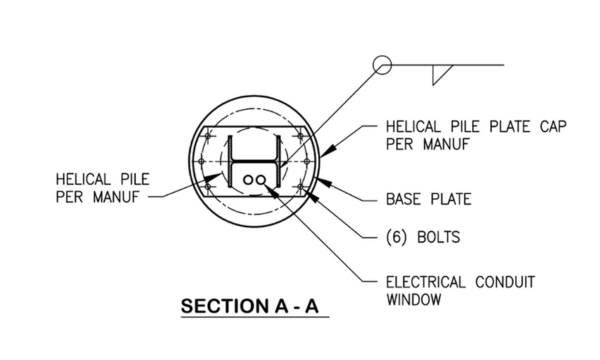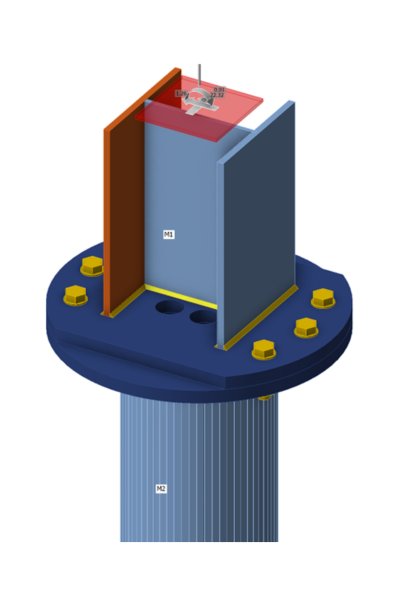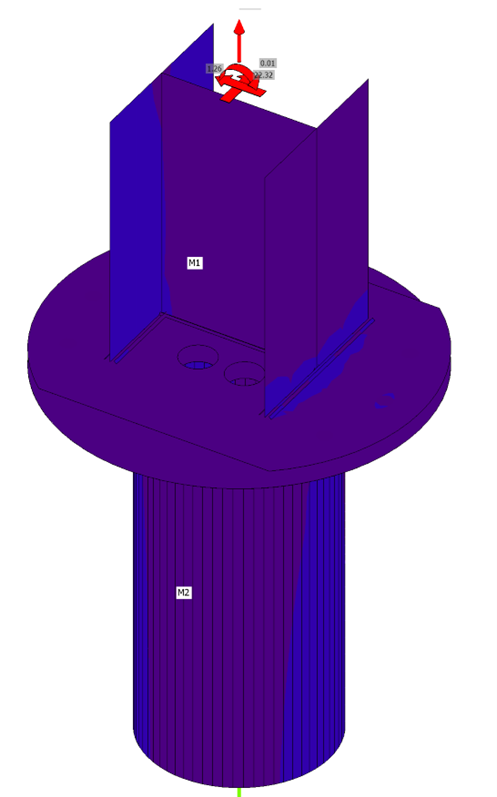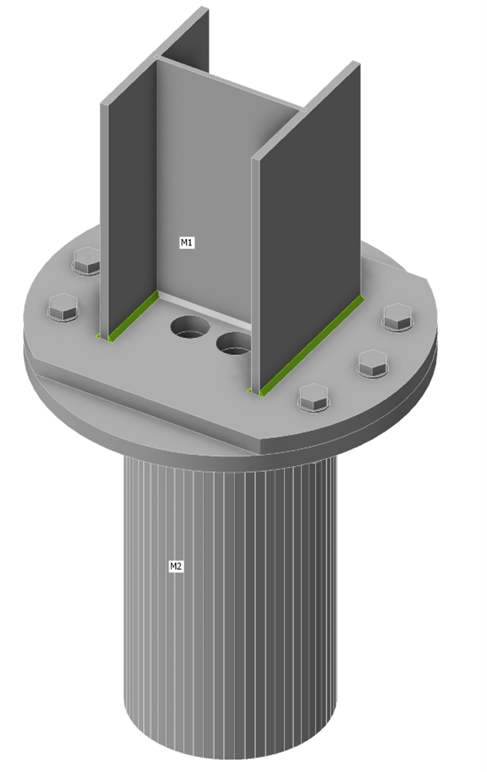Baseplate conduit connection for solar canopy, Massachusetts
About the Project
The Mt. Tom Solar Canopy, located in Northampton, MA, is an ambitious photovoltaic (PV) installation project. The project features a long-span array supported by Wide Flange sections, with PV modules attached to cold-formed steel purlins spanning between beams. The lateral force-resisting system complies with ASCE 7 Chapter 15 standards, ensuring stability and safety. The columns are mounted using bolted connections to screw piles, a method chosen for its robustness and reliability.
The design was provided by KPFF Consulting.
Engineering Challenges
Designing the baseplate conduit connections for the Mt. Tom Solar Canopy presented several significant engineering challenges. One of the primary issues was accommodating the complex load distributions and unique behaviors inherent in the canopy structure. The presence of conduit holes in the baseplate further complicated the stress distribution analysis, making it essential to accurately model these elements to ensure the canopy's structural integrity. Traditional hand calculations were not feasible for capturing these nuanced effects, as they lacked the precision required for such detailed analysis.
Another challenge was the iterative nature of the design process. Given the innovative canopy design, the engineering team needed to continuously refine and adjust the design to meet structural requirements while ensuring feasibility and constructibility. This process required a flexible and powerful analytical tool capable of handling multiple design iterations without compromising on accuracy or efficiency.
Additionally, the project's compliance with ASCE 7 Chapter 15 standards required thorough documentation and verification of all structural elements. This compliance involved not only the primary structural components but also the intricate details of the connections, particularly where the PV modules interfaced with the structural steel framework. Ensuring that all these elements met the stringent standards necessitated advanced computational support to provide comprehensive and reliable analysis results.
Solutions and Results
IDEA StatiCa was instrumental in overcoming the complex design requirements of the Mt. Tom Solar Canopy. The software's advanced modeling capabilities enabled the engineering team to address the intricate challenges posed by the baseplate conduit connections. By utilizing IDEA StatiCa, the team could perform a finite element analysis that provided an in-depth understanding of the stress distribution through the baseplate, accounting for the presence of conduit holes. This level of analysis was crucial for ensuring the structural integrity of the canopy, as it identified potential stress concentrations and allowed for the design to be optimized accordingly.
The iterative design process was significantly enhanced by IDEA StatiCa's flexibility. The software allowed the team to rapidly test and refine different design configurations, ensuring that each iteration met both structural and constructibility criteria. This capability was particularly valuable given the innovative nature of the canopy design, where traditional methods would have been time-consuming and less effective. The ability to quickly iterate on the design not only improved efficiency but also ensured that the final design was both practical and robust.

United States
Moreover, IDEA StatiCa's comprehensive calculation packages played a vital role in the project's compliance with ASCE 7 Chapter 15 standards. The detailed reports generated by the software provided thorough documentation of the structural analysis, including the intricate details of the connections. This documentation was essential for project submissions and ensured that all structural elements were verified to meet the required standards. The calculation packages also facilitated communication with stakeholders, providing clear and detailed evidence of the engineering team's rigorous analysis and design process.
Summary
The use of IDEA StatiCa in the Mt. Tom Solar Canopy project not only addressed the complex engineering challenges but also enhanced the overall efficiency and accuracy of the design process. The software's advanced capabilities ensured that the project met all structural requirements while providing the flexibility needed for innovative design solutions. The successful completion of the project demonstrated the critical role of advanced engineering software in modern structural design, particularly for renewable energy projects.
Próbálja ki az IDEA StatiCa-t ingyen





